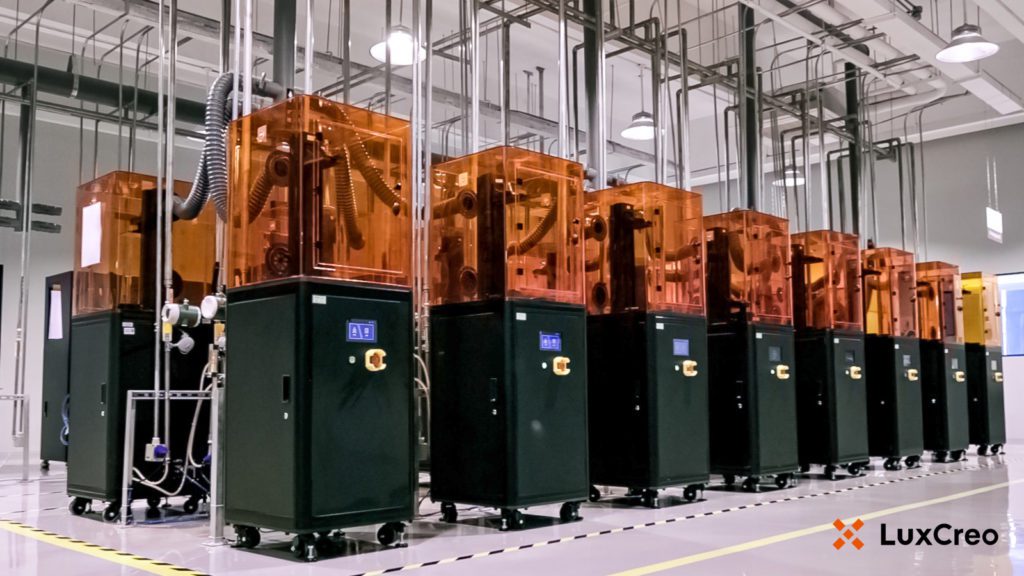
Understanding 3D Printing in Manufacturing
Defined as the construction of a three-dimensional object from a computer-aided design (CAD) or a digital 3D model, 3D printing or additive manufacturing is transforming the world as we know it.
However, when we hear the term 3D printing, oftentimes the technology isn’t seen as a solution that has the ability to manufacture high volume or finished products. That’s because many manufacturers’ first exposure to 3D printing was fused deposition modeling, in which plastic filaments extrude through a nozzle during printing. Materials used in 3D printing were formerly confined to plastics and weak metal alloys that only supported functional prototypes or finished products.
Today, the scope of 3D-printable materials has grown significantly to include a variety of metals, polymers, organic materials, ceramics, and even biological materials. This means 3D printing has the ability to provide significant flexibility for what a manufacturing site or line can produce. In turn, supply chains become more agile and less reliant on traditional methods.

What is 3D printing?
3D printing, or additive manufacturing, refers to a variety of processes in which material is deposited, joined, or solidified under computer control to create three-dimensional objects by adding materials in layers[1]. This type of technology is used in a variety of industries, enabling businesses of all sizes to manufacture everything from dental products, footwear, to high-end cosmetic applicators.
The technology 3D printing provides allows for greater design freedom and enables manufacturers to create more complex designs than traditional manufacturing models. With recent advancements in 3D printing technologies and materials, machines and processes can not just support, but produce prototypes and finished products. And, because 3D printing does not require traditional tooling, the technology can produce a range of products with a variety of materials on a single machine.
What are the benefits of 3D printing?
3D printing has the potential to enhance the future of manufacturing to become a more simplified and sustainable process, making this an important investment for any company looking to produce their own products.
The benefits of 3D printing include:
- Cost efficiency. 3D printing dramatically changes the cost structure behind design, prototyping, testing, and full-scale production. This technology eliminates the need for tooling, which both reduces the cost structure and risk of manufacturing. It also reduces the need to keep inventory on hand, speeds up design to production cycles, and enables a more diverse set of products manufactured at any one site which improves cost efficiency across the board.
- Simplified manufacturing process. 3D printing reduces the number of steps it takes to produce a finished product, simplifying the manufacturing process by:
- Streamlining design to production: By eliminating tooling and enabling production using a wide range of materials, companies can immediately print the finished product when the design is complete. When prototyping and production use the same process, the need for test runs focused on recreating the prototype in a production environment is eliminated.
- Part consolidation or amalgamation: With traditional manufacturing processes, a design may need to be broken down to multiple parts for production and then assembled. With 3D printing, multiple parts that might normally be welded, bonded, or attached with fasteners can be fabricated as a single finished piece.
- Flexible innovation. By utilizing high-performance 3D-printable polymers, manufacturers’ can explore, test, modify, and validate their designs quickly without the need for tooling. Because 3D printers are typically built for the sole purpose of rapid prototyping, the process makes it more efficient to build prototypes and test proof-of-concept. Plus, without the need for tooling, a product design team can accelerate getting their new product or design variation into production and printed immediately, as long as capacity is available. Recent innovation in 3D printers, material, and software has made high volume additive manufacturing feasible, and in some cases, the best solution to get a product to market.
- Faster time to market. A single 3D printing system can produce a wide range of products using a variety of materials, increasing production line flexibility and accelerating time to market. After a design is finalized, the manufacturer can immediately start production using the same 3D-printable polymers and 3D printers used during innovation, or immediately scale with a cloud-connected 3D printer to a Smart Factory. The speed of innovation enabled by 3D printing allows manufacturers to better match supply with demand and quickly improve products, while flexibility and agility allow companies to easily implement low-volume manufacturing strategies, which can make them more competitive in the market.
- Sustainability. Additive manufacturing is more material-efficient by using only necessary amounts to create objects or significantly reducing waste byproducts if support structures are needed. Printing on demand also allows companies to reduce inventory and print products on an as-needed basis. Additionally, fabrication as a single piece reduces assembly costs, lowers the overall weight of the finished product, and eliminates the potential for joint failures.
- More resistant to risk. Supply chains that leverage 3D printing are more agile, resilient to unexpected disruptions, and better respond to changes in market demand. 3D printing enables a range of low-volume manufacturing strategies. For smaller manufacturers, 3D printing reduces risk by allowing the factory line to be more diversified in the products it can produce.
To scale, connected 3D printers can seamlessly print the same product at a 3D printing smart factory, making it easier to get a new product onto a production line for high-volume manufacturing. As 3D printing systems have become more advanced, more smart factories incorporate 3D printing as a standard process. A modern smart factory is a cloud-connected factory that replicates local manufacturing success with 3D printing and increases production capacity without increasing capital investments.
Companies looking to enable high-volume on-demand manufacturing should select an outsourcing partner that provides access to advanced 3D printing solutions in a smart factory. Learn more.
[1] https://www.theengineer.co.uk/the-rise-of-additive-manufacturing/
Subscribe to Our Newsletter
Be the first to get our latest updates and free trials!
Popular Resources
Follow Us
Featured Products

4D Aligner™
First Smart ActiveMemory™
Aligner

iLux Pro Dental Solution
Ultimate 1-Click Dental
Application Solution

LuxCloud Dental
Your One-stop Digital Dentistry
Platform

 dental.luxcreo.com
dental.luxcreo.com






